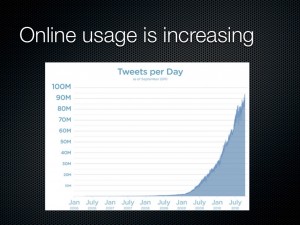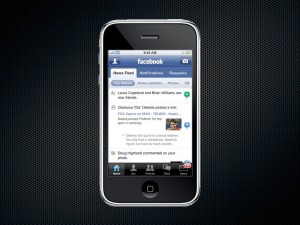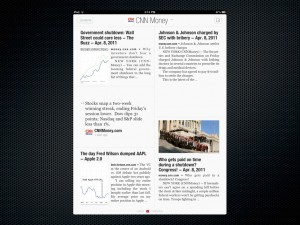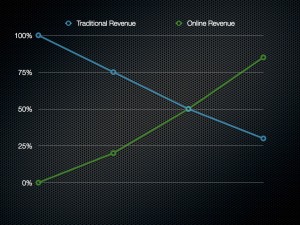Today I spoke at the Association of Electronic Journalists Prairie Regional Pro conference. The audience is a grouping of TV and radio new reporters and editors from the prairie provinces. There were many reporters there who I met previously while doing interviews. The talk was in a room of about forty people and the topic they asked me to talk about how TV and Radio can adapt to the changing world of technology and what they might do to survive in this new technology age which includes the internet.
With FaceBook, Twitter and other sites online people are spending more and more of their time online and less time in front of their TV sets. This is effecting the news industry and driving viewership and revenues down. Not many people I know schedule part of their day around the evening TV news anymore whereas in previous generations people would schedule their day around it. In fact people often didn’t feel informed unless they had watched the evening news. That has all changed and people are getting more and more of their information online. Online is now the place where many people go to get informed.

Up till recently when a viewer sat down for the TV news if they have been online viewing the news many of the stories will be repeats of what they already read online. A viewer may even feel more informed by the online information then the TV newscast. So with these problems in mind I went to talking about what the organizations might do to improve viewership. The answer of course is to go online.
The metaphor I used is one of the time before and after the printing press. Before the printing press there were authors and content creators and after the printing press they were there as well. I don’t think anyone would say that the printing press hurt authors who adapted to it in fact it likely helped them a great deal. The people who suffered from the advent of the printing press directly were the scribes who used to write out the text of the old books by hand. These scribes equivalent to today’s technology of a modern newscast will likely need to change and adapt. But this doesn’t mean that the content creators themselves will be any worse off in the long run.
I got them to realize that many people are not only getting their news from large news sites but also from news aggregator websites and what will become more important in the future from places like FaceBook. When a friend likes a story it shows up in their news feed this is the only place where some people get their news already. The important thing is to be in that news feed as well. Like the image below information about their friends is posted along with news stories your friends liked or recommended.

I also talked about iPad applications like Flipboard shown below:

The main problem for this group right now is the content just isn’t in a format that viewers want. Though it is content and information people want. People still want to know when the potholes will be fixed in the city for example. Some changes to the format that I suggested include:
* Make TV stories shorter and focused on a topic. But at the same time offer content online you never know what video or story might go viral. An example is a 30 minute podcast about a story that might have only gotten 30 seconds in the news story but people can goto your site to find out more information.
* Their website should add value above and beyond what is in the regular newscast rather then just repeating it. Videos should be chopped into individual stories online as well as posting the full newscast.
* Realize that people are informed by other sources like CNN on national news. Viewers will go to those sources for those stories. If they are reporting on the national news at six for many people they are just repeating what people have already learned about hours ago online.
* Make their content available online but not for free. Instead use some sort of revenue generation model. Making videos available on YouTube but with revenue sharing. Another was using Google News to share their content. Keep in mind that once a TV newscast is done and over for the day the cost of posting that video online to YouTube is minimal since that video will just be lost in any case.
* To subscribers send out a once-a-week email which has links to the top ten stories for the week. Likely with rich videos on the other end.
* In later stages creating mobile (iPad, iPhone) applications which display their content in a easily usable form. Part of this as well is giving people instant notifications on what they are interested in and giving them the option to open that story immediately.
I got several questions around what business models are proven to work but the answer from my research is that nobody has really figured this out yet. There are certainly models which do make money but nobody knows the best way to present this content yet. We are really in that transition time not unlike in some ways the transition period to when there were no printing presses to when they were everywhere in society.
I close this post with the quote I started the presentation with:
“It’s obvious that in five or 10 years, most news will be consumed on an electronic device of some sort. Something that is mobile and personal, with a nice color screen.” – Eric Schmidt Google CEO 2001-2011.


